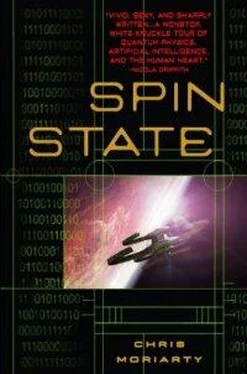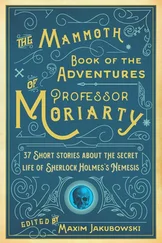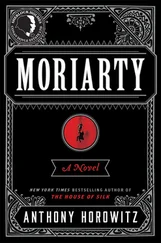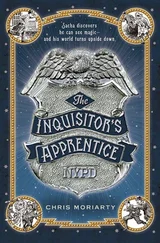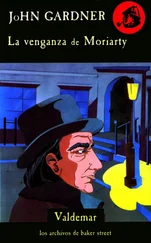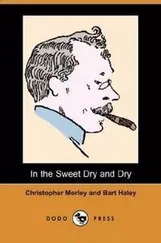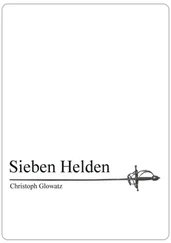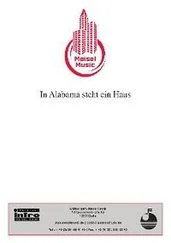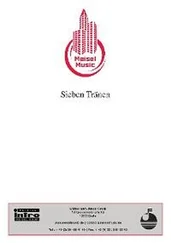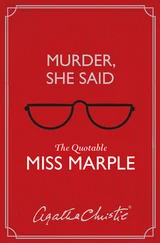*Murray Gell-Mann. The Quark and the Jaguar: Adventures in the Simple and the Complex . New York: W. H. Freeman Co., 1995.
*Adrian Kent. “Night Thoughts of a Quantum Physicist,” in Visions of the Future: Physics and Electronics , ed. J. Michael T. Thompson. Cambridge, UK: Cambridge University Press, 2001.
*Gerard Milburn. Schrödinger’s Machines: The Quantum Technology Reshaping Everyday Life. New York: W. H. Freeman Co., 1997.
B. L. Van der Waerden. Sources of Quantum Mechanics. Amsterdam: North-Holland Publishing Co., 1967.
Quantum Information Theory (EPR, Quantum Cryptography, and Quantum Computing)
*Amir D. Aczel. Entanglement: The Greatest Mystery in Physics . New York: Four Walls Eight Windows, 2002.
A. Aspect, J. Dalibard, and G. Roger. “Experimental Test of Bell’s Inequalities Using Time-Varying Analyzers,” Phys. Rev. Lett. 49 (25), 1804 (1982).
J. S. Bell, “On the Einstein-Podolsky-Rosen Paradox,” Physics, 1-3, 195 (1964).
C. H. Bennett, “Classical and Quantum Information: Similarities and Differences,” Frontiers in Quantum Physics, eds. S. C. Lim, R. Abd-Shukor, K. H. Kwek. Singapore: Springer-Verlag, 1998.
C. H. Bennett, “Quantum Cryptography Using Any Two Nonorthogonal States,” Phys. Rev. Lett. 68(21), 3121 (1992).
C. H. Bennett, S. J. Weisner, “Communication via One-and Two-Particle Operators on EPR States,” Phys. Rev. Lett. 69(20), 2881 (1992).
C. H. Bennett, G. Brassard, C. Crépeau, R. Jozsa, A. Peres, and W. K. Wootters, “Teleporting an Unknown Quantum State via Dual Classical and EPR Channels,” Phys. Rev. Lett. 70(13), 1895 (1993).
*C. H. Bennett, G. Brassard, C. Crépeau, R. Jozsa, A. Peres, and W. K. Wootters, “Quantum Cryptography,” Scientific American, Oct. 1992, p. 50.
C. H. Bennett, “Quantum Information and Computation,” Physics Today 48(10), 24 (1995).
C. H. Bennett, D. P. DiVicenzo, J. A. Smolin, “Capacities of Quantum Erasure Channels,” Phys. Rev. Lett. 78(16), 3217 (1997).
N. Bohr, “Can Quantum-Mechanical Description of Physical Reality Be Considered Complete?” Phys. Rev. 48, 696 (1935).
*Michael Brooks, ed. Quantum Computing and Communications . London: Springer-Verlag, 1999.
*Julian Brown. Minds, Machines and the Multiverse. New York: Simon Schuster, 2000.
Cohen, Horne, Stachel, eds. Potentiality, Entanglement and Passion-at-a-Distance: Quantum Mechanical Studies for Abner Shimony (Vol. 2). Dordrecht: Kluwer Academic Publishers, 1997.
Alexander Giles Davis, “Quantum Electronics: Beyond the Transistor,” in Visions of the Future: Physics and Electronics , ed. J. Michael T. Thompson. Cambridge, UK: Cambridge University Press, 2001.
David Deutsch, Patrick Hayden, “Information Flow in Entangled Quantum Systems.” Oxford, UK: Center for Quantum Computation, Clarendon Laboratory, University of Oxford, June 1999.
*David Deutsch. The Fabric of Reality . New York: Penguin, 1997.
David Deutsch, “Quantum Theory: The Church-Türing Principle and the Universal Quantum Computer,” Roy. Soc. Lond. A 400, 97 (1985).
A. Einstein, B. Podolsky, N. Rosen, “Can Quantum-Mechanical Description of Physical Reality Be Considered Complete?” Phys. Rev. 47, 477 (1935).
Richard P. Feynman, “Quantum Mechanical Computers,” Between Quantum and Cosmos: Essays in Honor of John Archibald Wheeler, eds. W. H. Zurek, A. van der Merwe, W. A. Miller. Princeton, New Jersey: Princeton University Press, 1988.
Richard P. Feynman, “Simulating Physics with Computers,” Int. J. Theor. Phys. 21, 467 (1982).
L. Grover, “Quantum Mechanics Helps in Searching for a Needle in a Haystack,” Phys. Rev. Lett. 80, 325 (1998).
L. Grover, “Quantum Computers Can Search Rapidly By Using Almost Any Transformation,” Phys. Rev. Lett. 80, 4329 (1998).
N. David Mermin, “A Bolt from the Blue: The E-P-R Paradox,” in Niels Bohr: A Centenary Volume , eds. A. P. French, P. J. Kennedy. Cambridge, MA: Harvard University Press, 1985.
*Gerard Milburn. The Feynman Processor: Quantum Entanglement and the Computing Revolution. Malibu, CA: Perseus Books, 1998.
*M. Mosca, R. Jozsa, A. Steane, and A. Ekert, “Quantum-Enhanced Information Processing,” in Visions of the Future: Physics and Electronics , ed. J. Michael T. Thompson. Cambridge, UK: Cambridge University Press, 2001.
Michael A. Nielsen and Isaac L. Chuang, Quantum Computation and Quantum Information . Cambridge, UK: Cambridge University Press, 2000.
B. Schumacher, “Sending Entanglement Through Noisy Channels,” Bose-Einsteinint, quant-ph/9604023 (1996).
*Tom Siegfried. The Bit and the Pendulum: From Quantum Computing to M Theory—the New Physics of Information . New York: John Wiley Sons, Inc., 2000.
*Colin P. Williams and Scott H. Clearwater. Ultimate Zero and One: Computing at the Quantum Frontier. New York: Copernicus, 2000.
*Michale Zeise, “Spin Electronics,” in Visions of the Future: Physics and Electronics , ed. J. Michael T. Thompson. Cambridge, UK: Cambridge University Press, 2001.
W. H. Zurek, “Decoherence, Chaos, and the Physics of Information,” in Frontiers in Quantum Physics , eds. S. C. Lim, R. Abd-Shukor, K. H. Kwek. Singapore: Springer-Verlag, 1998. (See in particular C. H. Bennett, “Classical and Quantum Information: Similarities and Differences,” p. 24.)
W. H. Zurek, “Decoherence and the Transition from Quantum to Classical,” Physics Today 44, 36 (1991).
Spinfoam, Wormholes, Time, and Other Strange Beasts…
A. Andersen, B. De Witt, “Does the Topology of Space Fluctuate?” Between Quantum and Cosmos: Essays in Honor of John Archibald Wheeler , eds. W. H. Zurek, A. van der Merwe, W. A. Miller. Princeton, New Jersey: Princeton University Press, 1988.
B. De Witt, N. Graham, eds. The Many-Worlds Interpretation of Quantum Mechanics. Princeton, New Jersey: Princeton University Press, 1973.
Hugh Everett, “‘Relative State’ Formulation of Quantum Mechanics,” Rev. Mod. Phys. 29(3), 454 (1957). 3
Rodolfo Gambini, Jorge Pulin. Loops, Knots, Gauge Theories and Quantum Gravity. Cambridge, UK: Cambridge University Press, 1996.
Chris J. Isham. Modern Differential Geometry for Physicists, 2nd Ed. Singapore: World Scientific Publishing Co, 1999.
Chris J. Isham. Lectures on Quantum Theory: Mathematical and Structural Foundations. London: Imperial College Press, 1995.
Chris J. Isham, Roger Penrose, eds. Quantum Concepts in Space and Time . Oxford, UK: Clarendon Press, 1986.
C. W. Misner, K. S. Thorne, J. A. Wheeler. Gravitation. San Francisco: W. H. Freeman Co., 1973.
Roger Penrose, Wolfgang Rindler. Spinors and Space-Time . Cambridge, UK: Cambridge University Press, 1984.
B. G. Sidharth, “Quantum Mechanical Black Holes: An Alternative Perspective,” in Frontiers in Quantum Physics , eds. S. C. Lim, R. Abd-Shukor, K. H. Kwek. Singapore: Springer-Verlag, 1998.
*Lee Smolin. Life of the Cosmos. Oxford, UK: Oxford University Press, 1996.
L. Smolin, “The Future of Spin Networks,” in The Geometric Universe, eds. S. A. Hugget et al. Oxford: Oxford University Press, 1998.
*Lee Smolin. Three Roads to Quantum Gravity . UK: Spartan Press, 2001.
K. S. Thorne, “Closed Timelike Curves,” in General Relativity and Gravitation 1992: Proceedings of the Thirteenth Annual Conference on General Relativity and Gravitation, 295. Bristol: Institute of Physics Publishing, 1993.
Читать дальше
